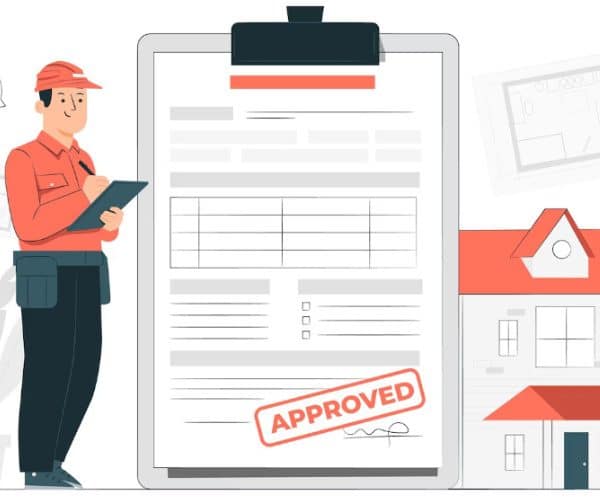Invoice is a commercial document that the seller gives to the buyer to collect payment. It usually contains a breakdown of how much is to be paid for which products and till when. But these are not the only components of an invoice.
Let’s learn about more components that are an essential part of an invoice.
Integral Components of an Invoice

Below is the list of the integral components of an invoice:
Invoice Identity
The moment someone sets their eyes on the invoice, it should be clear that it is an invoice. This is why it is crucial to mention the word “INVOICE” at the top of the document.
Businesses can make the font of this word bigger and bold. This is how companies can avoid any confusion in future transactions and manage internal operations.
Invoice Number
The invoice should also have a unique Invoice Number. This unique identifier separates it from the rest of the invoices or other documents.
Businesses can use automated number-generating systems for invoices. These numbers can make tracking the invoices easier for businesses.
Company and Client’s Details
The business that is sending the invoice and the client that is receiving it should be mentioned on the invoice. It is crucial to mention the seller’s details that separate it from the rest.
It should include business name, logo (if available), address, contact number, and Taxpayer Identification Number (TIN), etc.
Similarly, the invoice should include information related to the client like the client’s business name, payor’s name (if separate), business address, contact number, etc.
Crucial Dates
Mentioning the crucial dates is an important component of the invoice. It should especially mention the date the invoice was released and the date when the payment is due.
This is helpful if there are delays in the payment. Sellers and buyers can clearly communicate as both dates are mentioned on the invoice.
Product Details
Next comes the product details for which the invoice is being released. The product names, SKUs, and the number of these products being sold should be presented clearly.
Amount and Tax Details
This might be the most crucial component of the invoice. The price per unit and total amount, including the tax, should be mentioned on the invoice.
The prices can be mentioned in the following way:
- Price per unit
- Total price of the X number of units
- Tax
- Total amount of the invoice
This detail clearly mentions the price details.
Payment Methods
These are the methods through which the customer can pay the seller. Multiple payment options can give more convenience to the buyers as they can make flexible choices.
Some of the popular payment methods used by businesses are cash, checks, online bank transfers, and credit and debit card payments among others .
Terms and Conditions
Invoice has an important role to play in a business transaction.
What Functions Does an Invoice Play in Business Transactions?

Following are the main functions of an invoice:
Track Payments
Keeping track of the completed payment and the one that is due is important, and this goes for both buyers and sellers. Buyers can know when the payment is due so that they can arrange for finances in due time.
Sellers also know when the payment is due and on this basis they can either remind the buyer to pay or impose a penalty if mentioned on the invoice.
Proof of Financial Transactions
It is proof of the transaction terms agreed between two parties.
It can be presented as proof in the court of law in case of fraud or other such issues.
Record Maintenance
Record keeping is important for businesses. Companies should know when a product was sold, to whom, and how much of it was sold.
This is helpful for several things like inventory tracking, audits, inventory forecasting, inventory replenishment, etc.
Tax Filing
The invoice can make tax filing very easy for companies. This is because it is proof of business transactions.
So companies can easily report their income by showing invoices.
Invoice isn’t of a single type; rather, there are many.
Types of Invoices
Following are the three main types of invoices:
- Pro Forma Invoice
- Interim Invoice
- Final Invoice
Let’s explore them briefly below:
Pro Forma Invoice
Pro Forma invoice is generally used for bigger transactions because it gives an estimate of how much the products/services cost. This is like a “pre-invoice”.
It is not a demand for payment; rather, it gives an idea to the buyer of how much they may have to pay. It usually has the list of products/services purchased, estimated price, shipping weight, and other important information.
Interim Invoice
Interim invoice is the breakdown of a big invoice into several smaller ones. So, instead of a business giving one big invoice to the customer, the seller gives several invoices for receiving partial payment of an order, which may or may not have been delivered.
This benefits both parties. Sellers can have a constant flow of cash during bigger projects, and buyers can pay the seller in smaller chunks.
Final Invoice
Final invoice is the standard invoice for most businesses that are not involved with big projects. This invoice is the demand for payment and has all the necessary information (mentioned above).
This is used for transactions that are smaller in size and are due within a specific time frame.
As the functions of the invoice are clear, let’s explore how it can be best used to benefit the transactions.
Explore more about Shipping Invoice.
How can Businesses Make the Best Use of Invoices?
Create Convenience for Buyers
The invoice is directed at the buyer, which is why it is convenient for the buyers to follow through. The details of products and costs should be clear and visible.
There should be no ambiguity in the terms and conditions on the invoice.
Use Automated Invoicing System
Manually creating invoices can have two major disadvantages for businesses. First, the chances of a mistake are more. Invoice number, product names, or calculating costs can have errors.
Another is that it can be time-consuming. Both these challenges can be sorted with the help of an automated invoicing system. It does the job quicker and gives error-free results.
Be Firm about On-Time Payments
Creating convenience for the customers doesn’t mean that delays in the payment should be ignored. Businesses should be clear in the terms and conditions about the payment details and then stick to it.
In exceptional cases, businesses are advised to accommodate them to create better customer relationships.
Conclusion
Businesses should understand that invoices are an official record of agreed financial transactions. Managing invoicing is essential for smooth business operations.
An invoice should be created in a simple manner, with all the necessary information mentioned on it.



